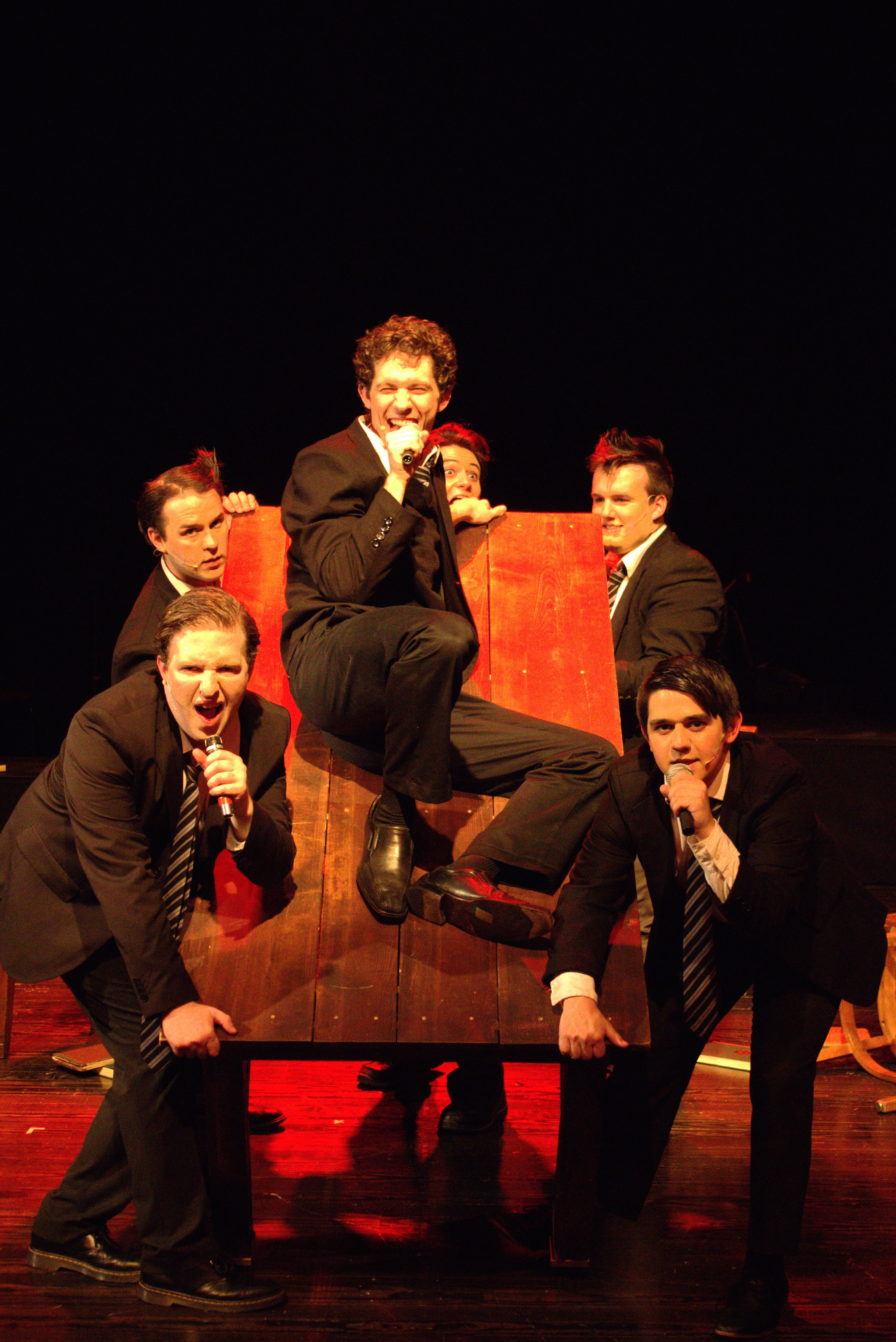Zuleyma Guevara and Kim Sullivan. photo: Jonathan Roberts.
A Doll’s House Part 2
By Lucas Hnath
Directed by Pirronne Yousefzadeh
Review by Keith Waits
Entire contents copyright © 2018 by Keith Waits. All rights reserved.
Lucas Hnath’s A Doll’s House Part 2 opens with a knock on a door. Reid Thompson’s haunting set design stretches across the Victor Jory Theatre with purpose, making the smallest ATL performance space feel somehow like the largest, and in in the center stands a door, tall, purple, and foreboding. The knock also begins small but grows louder and more insistent as no one comes to answer it.
Eventually, Socorro Santiago as Anne Marie will enter and open that door, but she stretches the waiting out further with her aged movements and noticeable limp. The moment flirts with slapstick but walks the razor’s edge of anticipation. She has waited 15 years for this knock, so what is a few more moments.
For on the other side is Nora (Zuleyma Guervara), Anne Marie’s former mistress, who walked out on her marriage and her children after confronting the reality of being a property of her husband Torvald (Kim Sullivan). The first A Doll’s House ends with her departure and the iconic sound of that door slamming behind her. Her return will prove almost as seismic an event in the household.
Hnath maintains the period and setting – it is Norway in1894, but updates the dialogue to express a modern sensibility and the occasional well-placed profanity, and the multi-racial casting here reinforces the idea that this not Ibsen’s world as much as Hnath’s. The characters are also not the same people we remember from the first play. Nora has prospered in her independence, living a liberated life after finding her voice to become a writer, while Torvald has raised three children while struggling to come to terms with his feelings for Nora. Anne Marie remains rooted in her commitment to the home, having served as a mother to the children.
Nora refuses at first to see the youngest, Emmy (Nikhaar Kishnani), who still lives at home, but the results of her initial meeting with Torvald force the circumstances. The request the daughter makes of her mother is unexpected and runs counter to what Nora stands for. She has written a novel based closely on her own experience, and she is close to militant in her stance against marriage as an institution. The early scenes of the play take on a didactic tone for a few moments as she explains her feelings to Anne Marie, and one of the interesting reversals Hnath builds is that his House is largely a play about women talking to each other. Nora finds as much resistance from Emmy and Anne Marie as she does from Torvald, who seems mellowed and compassionate in comparison.
All of which makes DHP2 as timely and potent a piece of theatre as we can hope for. The play was written more than 2 years ago, but Hnath has picked up the threads of the gender conflicts that have led to Me Too and Time’s Up with such dexterity that it plays as fully at this moment as if it were written yesterday. At one key moment, Nora considers that one option in resolving the problems that would require her to make false accusations, but forcefully rejects the notion as “weak…wrong.” It is tempting to read a more direct correlation with current events into such observations, but it undervalues the moral integrity and universality of both Hnath’s writing and Nora’s hard-won position.
The cast explores the depth of the text with intelligence and energy, but the nuance and complexity of the ideas are rich and demanding, and their very good work here cannot help but feel like just the beginning of the journey into this story. While they manage the richly humorous dialogue extremely well, their finest moments may have been when they are listening. Santiago, in particular, skillfully expresses the inner life of Anne Marie with fluid ease.
Hnath has built such a careful construct of societal examination and character conflicts that my mind is still spinning with the provocations contained in the play. Nora’s victory is under threat because society keeps finding more clever and insidious ways to subjugate women, and she stands alone in the play once again, but for different circumstances that nevertheless echo Ibsen’s original narrative.
But we also are forced to ponder the consequences of her departure, which include the abandonment of her children. How different might Emmy’s attitudes be if Nora had been a meaningful presence in her life? Nora is surprised at the feelings expressed by Emmy and Anne Marie seems naïve, since she left them in an environment that she found impossible. Is it fair to expect a different welcome?
Hnath navigates all of this so delicately so that we are never left to question any of the character’s sincerity, and can empathize with each of them equally. By bridging 19th century Europe and 21st century America, the playwright has made A Doll’s House Part 2 is a mirror for us all, a funny but scathing reflection of both the progress and failures of the last 100 years of human relationships in western society.
A Doll’s House Part 2
October 2 – November 4, 2018
Actors Theatre of Louisville
316 West Main Street
Louisville, Kentucky 40202
502- 584-1205
Actorstheatre.org
Keith Waits is a native of Louisville who works at Louisville Visual Art during the days, where he is Managing Editor of their Artebella blog, and host of LVA’s Artebella On The Radio on WXOX-FM 97.1/ ARTxFM.com. But spends most of his evenings indulging his taste for theatre, music and visual arts. His work has appeared in Pure Uncut Candy, TheatreLouisville, and Louisville Mojo. He is now Managing Editor for Arts-Louisville.com.





